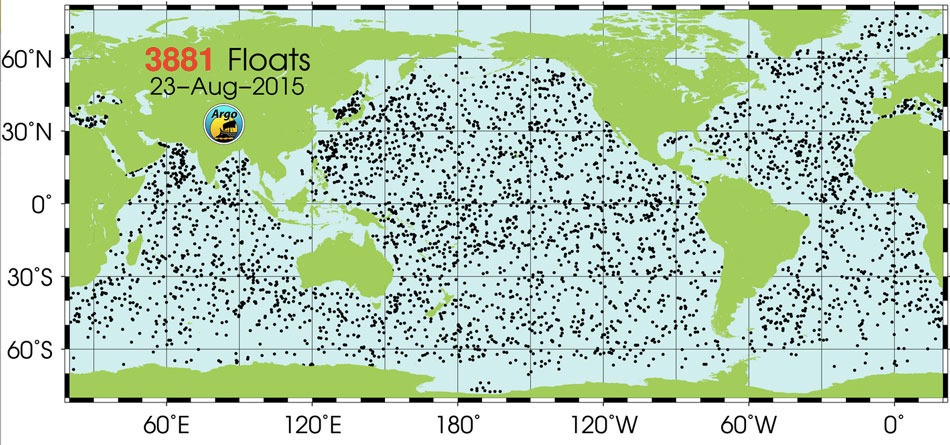
While the world goes crazy for drones, a hardworking set of marine robots are helping scientists learn more about our global waterways. Aquabots are the most advanced way to measure the reaches of the ocean, rivers and lakes, Matthew Dunbabin, a principal research fellow at the Institute for Future Environments at the Queensland University of Technology, told Mashable Australia.
In fact, at any given time, the world’s waters are buzzing with robots — and more are expected in the coming years. In the sea, a significant portion of the current number of autonomous vessels are part of the Argo environmental research project measuring the water’s temperature, salinity and movements. On Monday, for example, there are 3,881 Argo bots bobbing about the ocean, according to Argo’s website.
An international effort, Argo floats are very simple robotic buoys, Dunbabin said. They float with the currents and go down to a depth of around two kilometres (1.2 miles). Every 10 days they pop back up to the surface and transmit their data, which in turn feeds our global weather system and ocean current models.
After a year’s work in the lab, Dunbabin hopes to add more robots to the equation. “For health and safety reasons, if we have a flood or cyclone, or a disaster like an oil spill, it’s often not practical to send humans into that situation,” Dunbabin said. That’s where Inference robots come in.
Inference is a robotic boat system designed to be fully autonomous and live on waterways for months at a time. Built from fibreglass, the various sensors on the robots give researchers real-time environmental information on everything from water quality to gas emissions.
The solar-powered robots use differential steering and GPS to get around. They have a camera on board to help them avoid waterlilies and the shore line, and are designed to run on minimal power. The robots are also made to carry different payloads, such as a camera, greenhouse gas sensors or a machine that collects physical water samples. It can even launch a remotely operated underwater vehicle.
Inference robots, and those similar, are intended to fill a gap in our knowledge about water systems, as they can go where humans can’t go. Often, researchers can only go onto the water when the weather is good, leaving us without quality information about the oceans during storms. While robotic systems can handle poor conditions such as wind and rain, or can even be deployed purposefully during foul weather.

Inference bots are also able to investigate highly-polluted sites likes mines, Dunbabin said. His robots will soon be tested at a decommissioned site where the water is so acidic, you cannot use a normal aluminium boat. “Nobody knows what it’s like in the middle, so the team will use the system to collect samples,” he said.
They’re even testing underwater volcanoes with this new robot. On a recent excursion to the Solomon Islands, the team took “the brains” out of one of the Inference robots and built a simple vessel they didn’t mind blowing up. “We’ve got some of the first data sets where we’ve mapped the topology and methane and carbon dioxide release from active subsea volcanoes,” he said.
A couple of water going robots in QUT’s robotics lab. These collect environmental data. pic.twitter.com/m7R6lZO9yv
— Ariel Bogle (@arielbogle) August 24, 2015
For robots, the units are also not overly expensive, coming in at less than A$3000 each. Dunbabin said they’ve had lots of interest from overseas, and are starting to consider commercialisation.
The robots are still under development, however. The longest they’ve been left out in the wild so far was for two weeks after one got fried by lightening. The next stage is to have them explore for months at a time. “I suspect we’re going to get some really good discoveries [from these robots],” Dunbabin said. “Having that day and night cycle, after weather events … data that we don’t have now.
“Maybe we can put a replica system in Switzerland, the UK, the U.S. and have these multiple observing systems to really test what we know.”